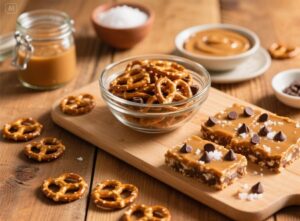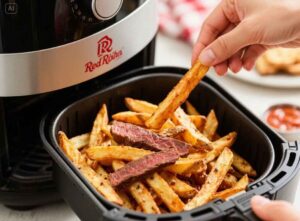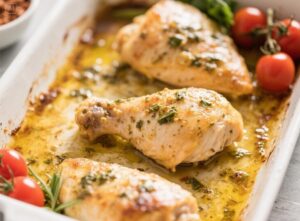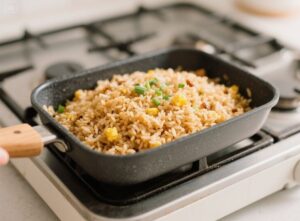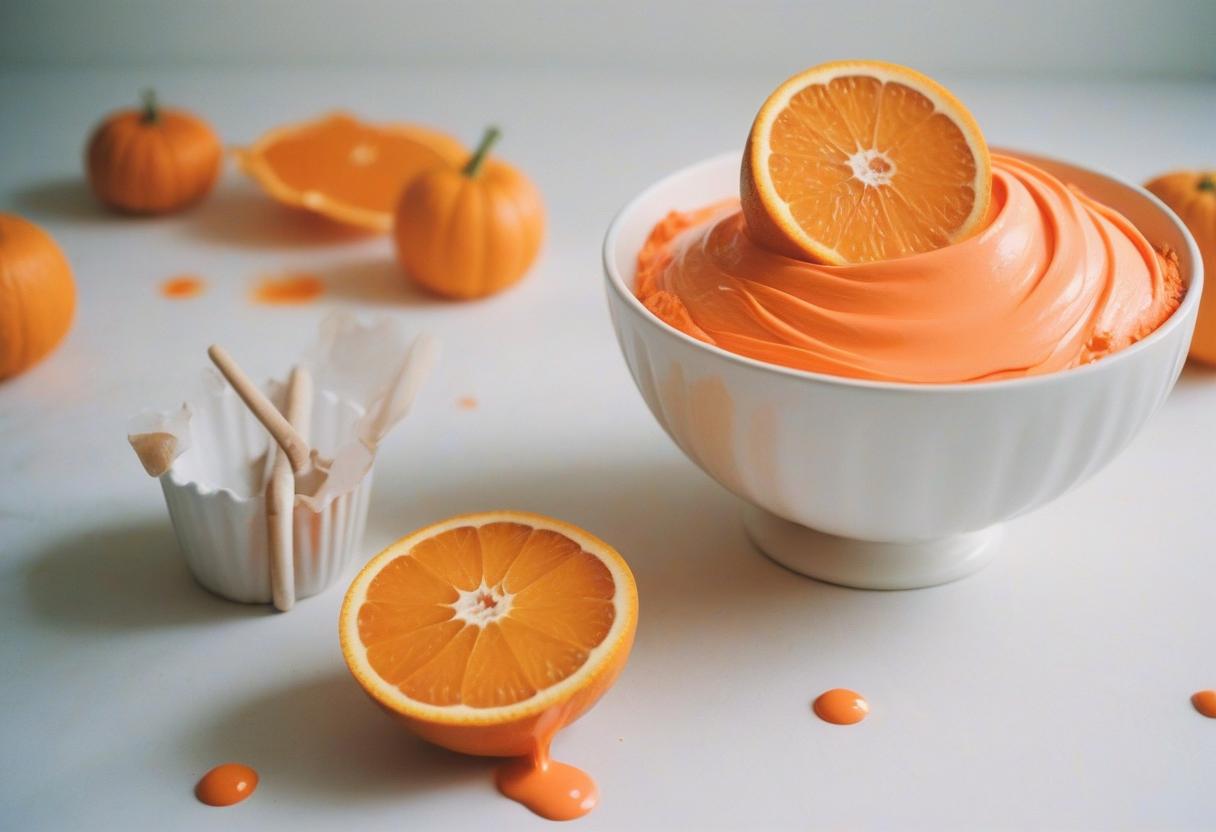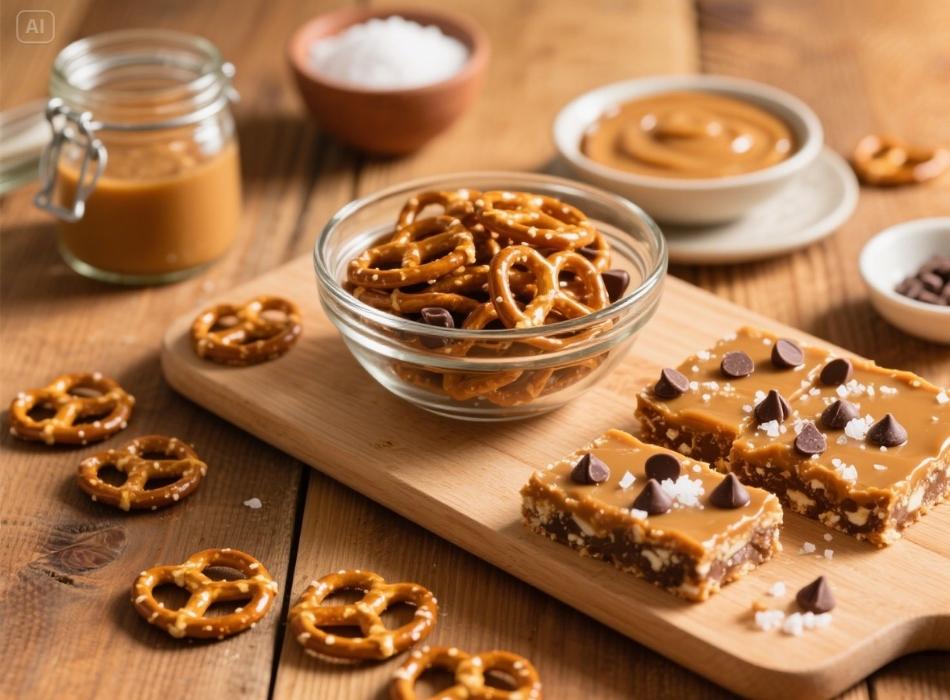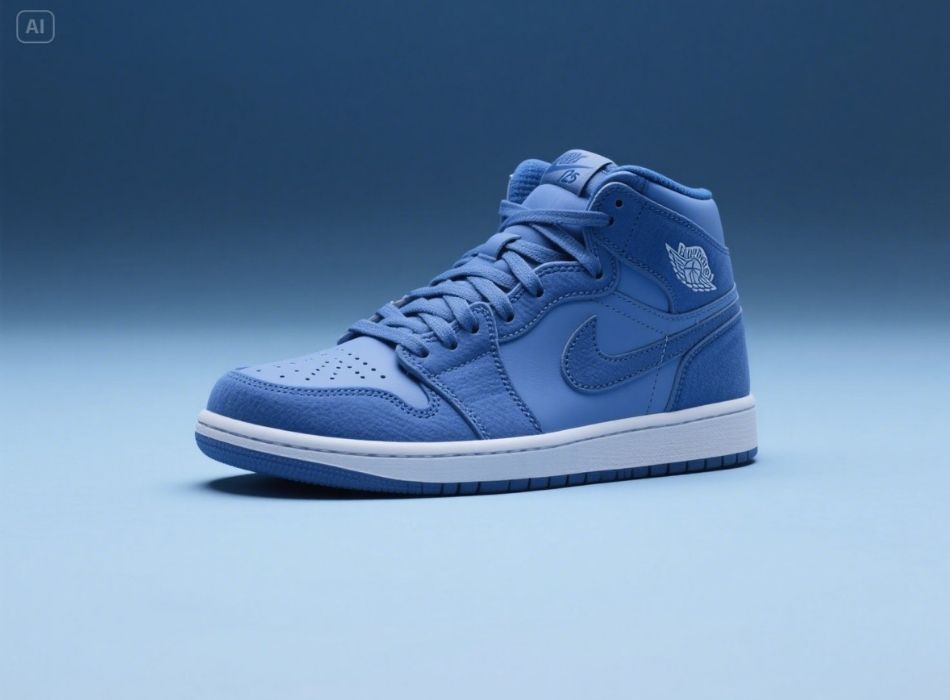When adding a splash of color to your culinary creations, orange food coloring is a vibrant choice that works wonderfully for fall-themed treats, Halloween desserts, or brightening your baked goods. But what if you don’t have orange food coloring or want a natural alternative? The good news is that making orange food coloring at home is easy, budget-friendly, and gives you more control over your ingredients.
This guide is tailored for home bakers, DIY enthusiasts, and food bloggers eager to add a personal—and creative—touch to their recipes. By the end of this post, you’ll know exactly how to make synthetic and natural orange food coloring at home to suit your needs perfectly.
Why Make Your Orange Food Coloring?

Before we jump into the methods, you might wonder why you bother making orange food coloring. Here are a few reasons:
Convenience: Did you run out of bottled orange food coloring mid-recipe? Making it at home saves a trip to the store.
Customization: Control the shade. Whether you need a vibrant tangerine or a subtle peach, homemade blends are fully adjustable.
Natural Alternatives: Avoid artificial dyes using carrots, paprika, or turmeric. This is perfect for health-conscious bakers or those catering to dietary preferences.
Now, let’s explore how to get that perfect orange hue.
Method 1: Mix Yellow and Red Food Coloring
This is the easiest method if you already have basic food coloring sets at home. Orange is a secondary color, made by blending yellow and red.
Ingredients and Tools
- Red liquid or gel food coloring
- Yellow liquid or gel food coloring
- Small mixing bowl or palette
- Toothpicks or a small spoon for mixing
Instructions
Start with Yellow
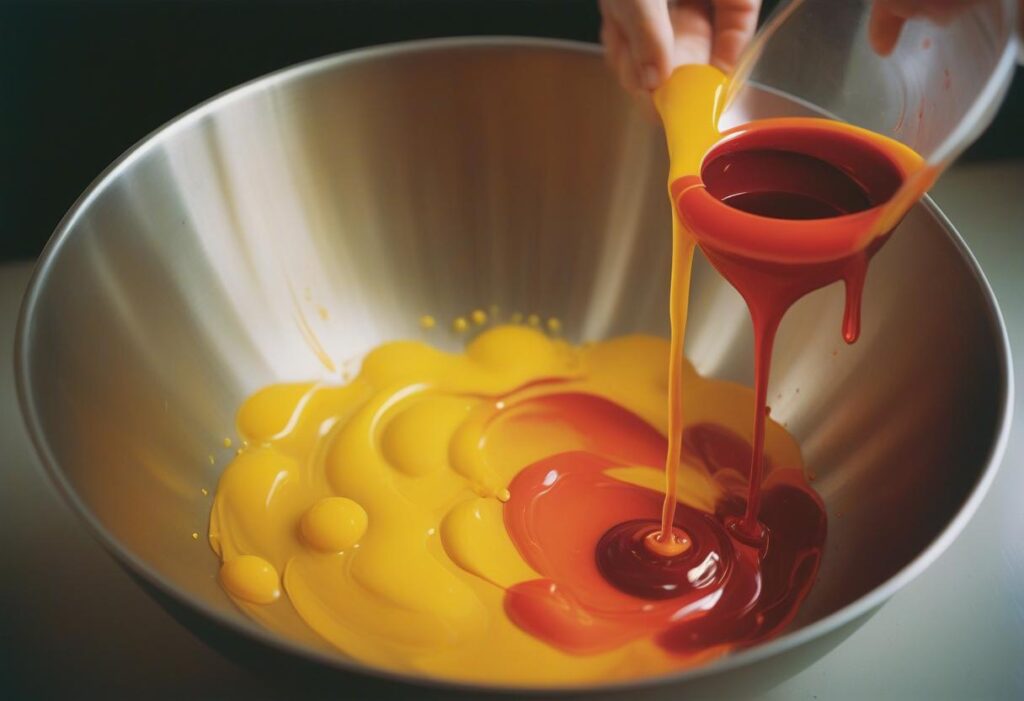
Add two drops of yellow food coloring to your mixing bowl. Yellow will serve as the base for orange, so always start here.
Add Red Gradually
Begin by adding red food coloring one drop at a time. Stir after each drop to blend the colors thoroughly.
Adjust to Your Desired Shade
Keep adding small amounts of red until you achieve the perfect shade of orange. A ratio of 2 parts yellow to 1 part red usually works well for a standard orange.
Pro Tip
If you want a peach shade, add a tiny amount of red. Need a more vibrant pumpkin orange? Add extra yellow.
This classic method works well for liquid and gel food colorings, making it a versatile option for anyone with basic baking supplies.
Method 2: Create Natural Orange Food Coloring
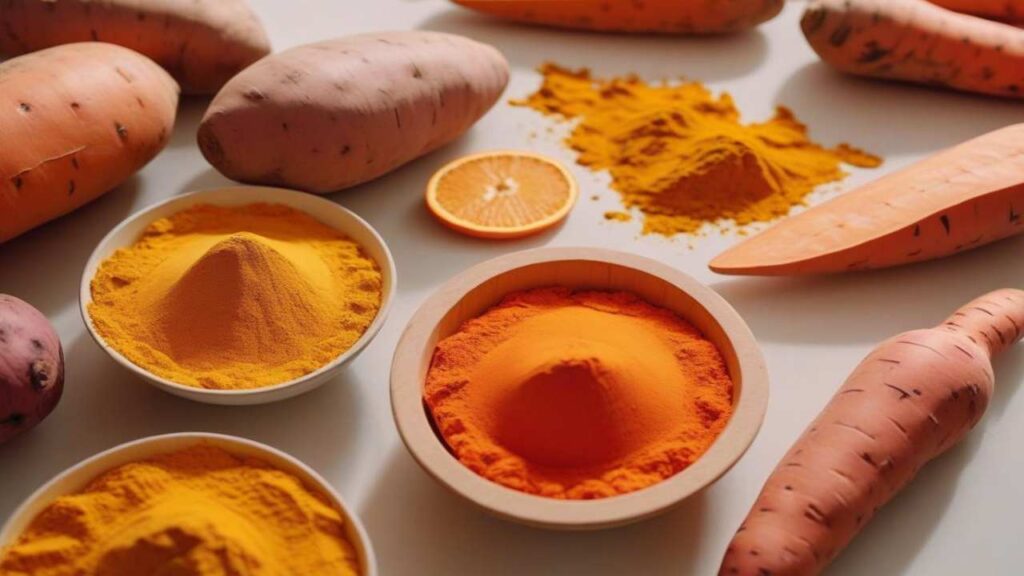
Do you prefer an all-natural option? Ingredients like carrots, sweet potatoes, paprika, and turmeric can help you achieve an orange hue without synthetic dyes. Here’s how!
Option 1: Carrot Juice
Carrots are naturally vibrant and make an excellent base for orange coloring.
Ingredients and Tools
- Two medium carrots
- Water
- Blender or juicer
- Cheesecloth or fine mesh strainer
Instructions
Peel and Chop Carrots
Wash, peel, and chop your carrots into small pieces.
Blend or Juice
If using a juicer, juice the carrots. If using a blender, add chopped carrots and a splash of water, then blend until smooth.
Strain the Mixture
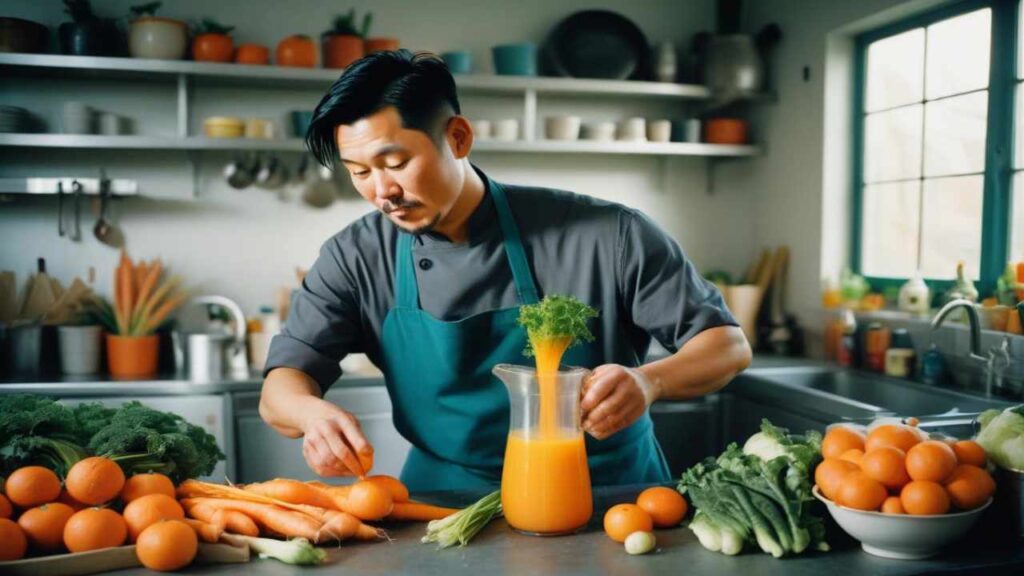
Pour the blended carrots through a cheesecloth or fine mesh strainer to extract only the liquid. This juice is your natural orange food coloring.
Use in Your Recipe
Add a small amount of carrot juice to your recipe. As a natural ingredient, it might slightly alter the flavor.
Pro Tip
Carrot juice works best in recipes with a subtle carrot flavor, such as carrot cake or autumn sugar cookies, and won’t overpower the dish.
Option 2: Paprika Powder
Paprika, a spice made from dried peppers, offers a natural orange hue with mild flavor notes.
Ingredients and Tools
- One teaspoon of paprika powder
- Two tablespoons water
Instructions
Mix Paprika with Water
Combine one teaspoon of paprika with two tablespoons of water. Stir well to ensure the spice dissolves.
Strain (Optional)
Strain the mixture through a fine mesh sieve to remove any gritty particles, leaving you with a smooth liquid.
Add to Your Recipe
Stir the orange liquid into your batter, frosting, or dough. Adjust the quantity for the desired intensity of coloring—Paprika coloring pairs well with savory dishes or mildly sweet recipes.
Option 3: Turmeric
Turmeric, known for its bright yellow pigment, can be mixed with other natural ingredients to create an orange color.
Ingredients and Tools
- One teaspoon of turmeric powder
- Splash of carrot juice or water
Instructions
Combine Ingredients
Mix turmeric powder with a splash of carrot juice (or just water) to create a deep orange color.
Stir and Adjust
Add more carrot juice for a lighter shade or extra turmeric for a more decadent, deeper orange.
Mix into Your Recipe
Add the blend sparingly to avoid overpowering with turmeric’s distinct flavor. This method works best for savory items like homemade bread or crackers.
Natural Coloring Considerations
Natural colorings affect your dish’s flavor and texture. When experimenting with new ingredients, always test in small batches.
Essential Tips for Using Homemade Food Coloring
Test Before Adding
Always test the color by adding a tiny amount to a small section of your icing, batter, or frosting. Adjust if necessary.
Store Properly
Natural food colorings, like carrot juice, should be stored in an airtight container in the fridge and used within 2-3 days.
Layer Your Colors
If the color isn’t vibrant enough, allow the mixture to rest for a few minutes, then add another layer by mixing in more color in small increments.
Mind the Recipe
Be cautious about how much liquid you add, especially in baking recipes where precise moisture levels matter. Opt for gel-based colorings or concentrated natural juices when possible.
Where to Use Your Orange Food Coloring
Orange food coloring is endlessly versatile and suits many creations. Here’s some inspiration:
- Frosting for fall cupcakes or Halloween cakes
- Seasonal sugar cookies for Thanksgiving
- DIY candy-making, like orange lollipops or caramels
- Vibrant pasta dough or savory sauces
- Artistic food styling for social media posts
Whether creating a spooky masterpiece or crafting an autumn-inspired bake, orange food coloring adds vibrancy and pizzazz to your treats.
Wrap Up Your Baking in Orange Hues
Making your own orange food coloring—synthetic or natural—is a satisfying, creative process that turns ordinary baking projects into extraordinary creations. From classic red-and-yellow combinations to natural mixes with carrots or paprika, there’s a method for every type of baker and recipe.
Are you ready to try your hand at colorful baking? We’d love to see your delicious creations! Please share your photos with us and tag [your blog/brand name].
Start experimenting today and enjoy the art of baking in full color.
